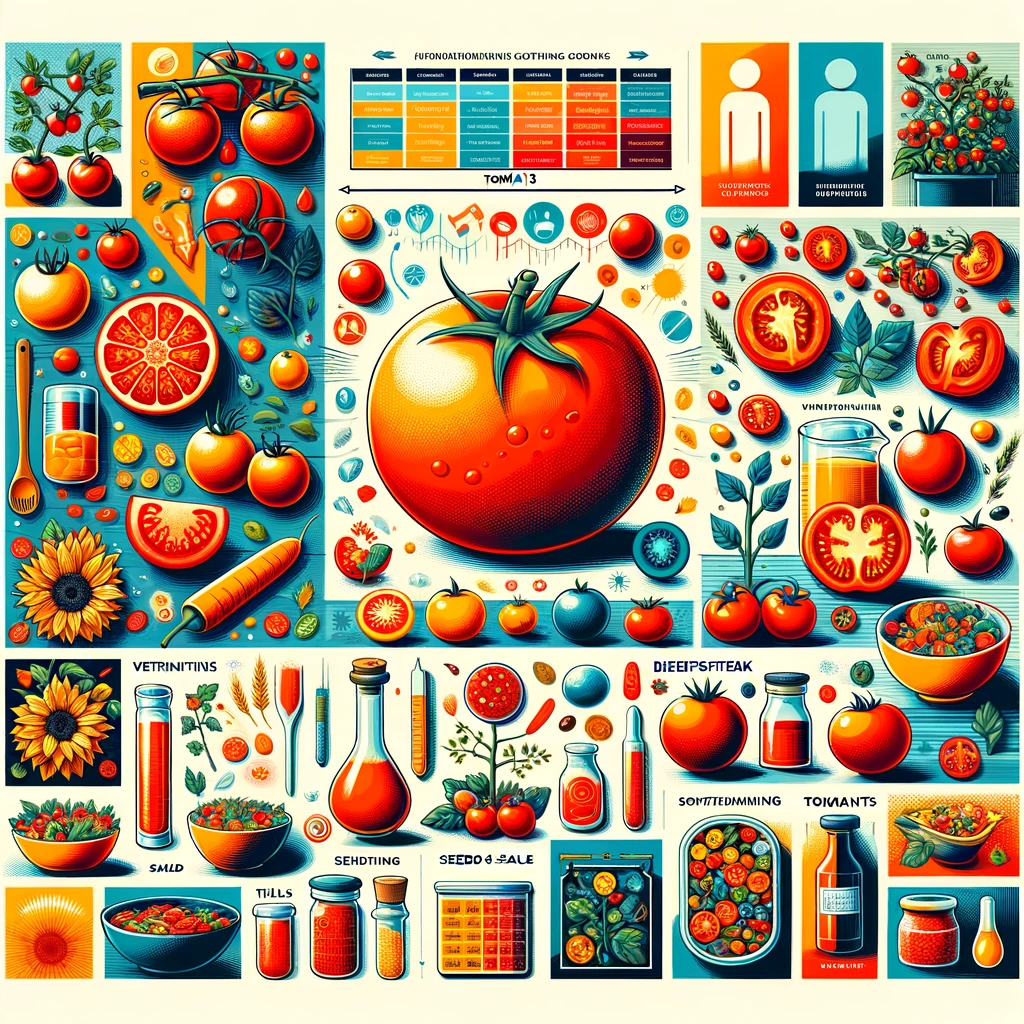Tomatoes are a staple in American cuisine, but their journey from exotic fruit to kitchen essential is filled with fascinating folklore and traditions. In this article, we delve into the rich history of tomatoes in the United States, exploring their origin, introduction, and the cultural significance they hold. Join us as we unravel the secrets of these vibrant red orbs and their evolution into one of the most beloved ingredients in American cooking.
The Tomato’s Mysterious Beginnings
The Tomato’s Origin Story
The tomato, scientifically known as Solanum lycopersicum, has its roots in South America, particularly in regions that are now part of modern-day Peru, Ecuador, and northern Chile. These small, wild tomatoes were initially cultivated by indigenous peoples over 2,000 years ago. With their vibrant colors and juicy interiors, they quickly captured the attention of the native populations.
Ancient Tomato Cultivation
The native peoples of South America cultivated tomatoes as an essential part of their diet, incorporating them into a wide range of dishes. These early tomato varieties were quite different from the large, red, and round tomatoes we are familiar with today. They came in various shapes, sizes, and colors, ranging from yellow and orange to red and even purple.
Tomatoes in Early America: A Bumpy Introduction
The Tomato’s Arrival in the USA
Tomatoes made their way to North America through European exploration and colonization in the 16th century. However, their initial reception in the United States was far from warm. Europeans were initially wary of tomatoes due to their resemblance to toxic plants within the same botanical family, such as deadly nightshade.
The Tomato’s Dubious Reputation
In the early 1700s, tomatoes were often grown as ornamental plants rather than food. Many believed that consuming tomatoes could lead to various ailments, including “tomato poisoning.” It wasn’t until the late 18th century that attitudes began to shift, thanks in part to the efforts of Thomas Jefferson, who grew tomatoes at his Monticello estate and popularized their use.
Tomato Folklore and Superstitions
Tomatoes and Witchcraft
One curious aspect of tomato folklore is their association with superstitions. In some parts of the United States, there was a belief that tomatoes had magical or even evil properties. They were sometimes called “wolf peaches” and thought to be linked to witchcraft.
The Love Apple Legend
Another intriguing piece of tomato folklore revolves around their role in love and romance. Tomatoes were often referred to as “love apples,” and some believed that eating them would lead to passionate and amorous feelings. This reputation may have contributed to their eventual acceptance as a culinary delight.
The Tomato’s Rise to Culinary Prominence
Tomatoes in American Cooking
As the 19th century progressed, tomatoes gradually gained acceptance as a versatile ingredient in American cuisine. Their rich, tangy flavor made them a popular addition to soups, sauces, and salads. Ketchup, a tomato-based condiment, also became a household staple during this time.
Tomatoes in Regional Traditions
Different regions of the United States developed their own tomato-based dishes and traditions. From Southern fried green tomatoes to hearty Midwestern tomato-based chili, the tomato’s influence on American regional cuisine cannot be overstated.
The Modern Tomato Phenomenon
Tomatoes in Today’s Kitchen
Today, tomatoes are a cornerstone of American cooking, found in a myriad of dishes from pizzas to BLT sandwiches. They have also become a symbol of freshness and health in the culinary world. The popularity of heirloom tomatoes and the farm-to-table movement further emphasize their significance in modern cuisine.
Growing Tomatoes at Home
Many Americans now cultivate tomatoes in their own gardens, relishing the opportunity to taste the unique flavors of heirloom varieties. Home gardening enthusiasts often engage in tomato swaps and festivals, celebrating the diversity of tomato types and flavors.
Conclusion
In the United States, the tomato’s journey from exotic curiosity to culinary staple is a testament to the evolving tastes and traditions of a nation. From their mysterious origins in South America to their contested introduction in early America, tomatoes have earned their place in American folklore and cooking. Today, they continue to captivate the palate, contributing their vibrant flavors and rich history to the tapestry of American cuisine. So next time you enjoy a slice of tomato on your burger or savor a bowl of tomato soup, remember the fascinating journey that brought this humble fruit to your plate.
